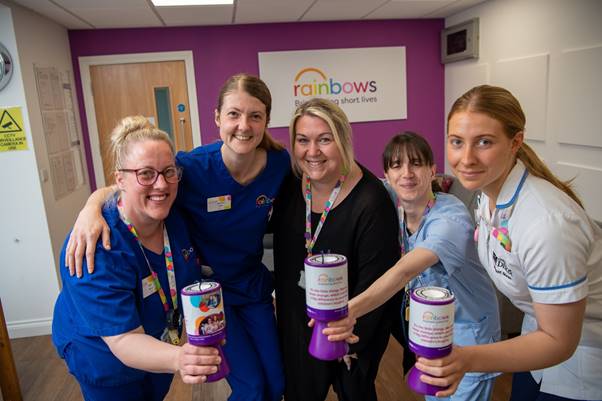LOUGHBOROUGH CHILDREN’S HOSPICE RECEIVES £1,500 DONATION FROM HOMEBUILDER

Rainbows Hospice for Children and Young People has received a £1,500 donation from leading housebuilder David Wilson Homes to assist with its vital work to brighten the lives of those with terminal and serious illnesses.
Located in Loughborough, Rainbows has been a lifeline for families since 1994, helping them make the most of every precious moment. It currently provides care and support for over 300 babies, children and young people, along with their families.
The donation came as part of the Barratt Developments Plc Charitable Foundation, which is designed to support national and local charities, large and small, across the UK to leave a legacy in the communities in which the housebuilder operates.
The contribution from David Wilson Homes will help Rainbows continue to provide palliative and end-of-life care, symptom management, emergency care and a wide range of other services.
Kate Golding, Head of Organisational Giving at Rainbows, said: “We can’t thank David Wilson Homes enough for this donation. It costs around £6.6 million a year to run the hospice and its services, and we predominantly rely on donations such as this one to do what we do.
“Rainbows is there to brighten short lives. We offer comfort and compassion during tough times, and provide the highest level of professional care until the end, and support after.
“David Wilson Homes’ Community Fund scheme is a great initiative to help many charities like us. It’s wonderful to hear that there is a monthly pot and employees get to have a say where the donation goes.
“From everyone here at Rainbows, from all the babies, children and young people who rely on support like this, we would like to offer David Wilson Homes our most sincere thank you.”
John Reddington, Managing Director at David Wilson Homes East Midlands, said: “As a leading housebuilder we strive to support the communities in and around the areas in which we build, and we are delighted to be able to offer Rainbows a donation to support the fantastic work it does.
“Rainbows makes such a difference to so many lives that need the help most. It is truly heart-warming to see the support, guidance and hope the charity offers.
To find out more about the work of the charity, visit the website at Rainbows Childrens Hospice.
For more information on any developments, please visit the website at David Wilson Homes in Leicestershire.






